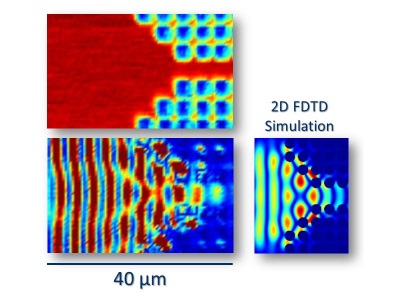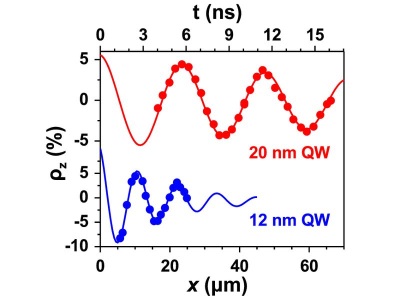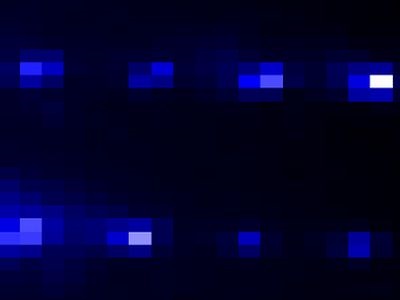All research projects in the group centre around surface acoustic waves and transform static structures into dynamic entities. All projects involve a complete skill set where SAW devices are designed, fabricated, tested, and applied to the quantum/nanostructures of choice.
Phononic Crystal Waveguides

Acoustic circuits on a chip – SAW devices are common place in radio-frequency receivers like mobile phones because they can be used as inexpensive, high quality frequency filters. But, can we do more. Our research into this area involves creating artificial materials (Phononic crystals) such that we can control the path of the SAWs and performance of the frequencies transmitted. Ultimately, more complicated and higher quality devices could be generated using such crystals.
Semiconductor Spintronics

You can’t fall over in a phone booth – Much of the work on realizing coherent spin transport in semiconductors originates with the idea that electrons spins can undergo rapid spin-preserving momentum collisions so that the spin can’t “fall over”. This effect is called motional narrowing. Using SAWs that can provide a full 3D confinement, dynamic quantum dots (DQDs) can be used to transport electron spin information with “long” coherence times (on the order of 10s of nanoseconds). We study the ability to enhance this effect with the ultimate goal of creating quantum logic using SAWs.
Acoustically Modulated Quantum Emitters

Using earthquakes to control quantum mechanics – SAWs inherently possess strain and, for certain materials, piezoelectric fields as they travel. Any given point will therefore experience a modulation of these properties as the SAWs flow by. If that point is a quantum dot, these perturbations can be quite strong, and the SAWs provide dramatic shifts in the QD’s optical and electronic properties. For QDs that are capable of generating single photons, the SAWs provide local modulations at high frequencies and tightly periodic intervals. In addition, SAW devices allow the transducer to be fabricated at large distances from the sensitive active region of the device so that no processing need take place near the quantum dots. As a result, you can create a gateable photon source with high repetition rates for quantum encryption.